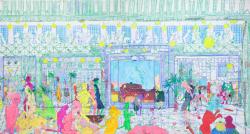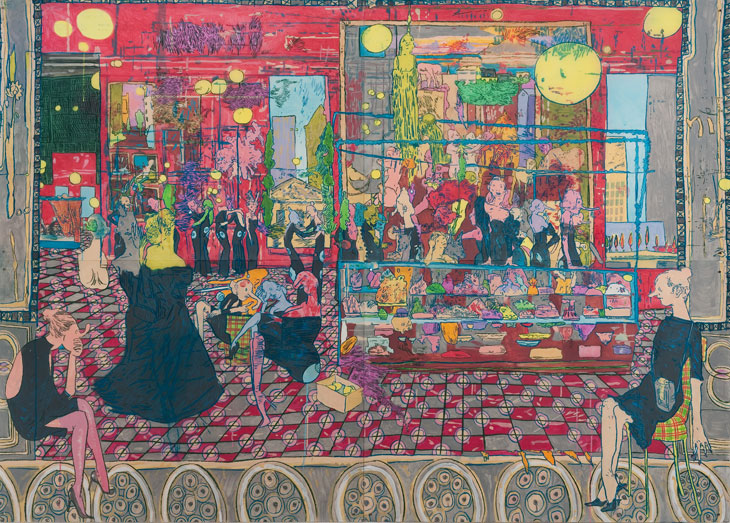
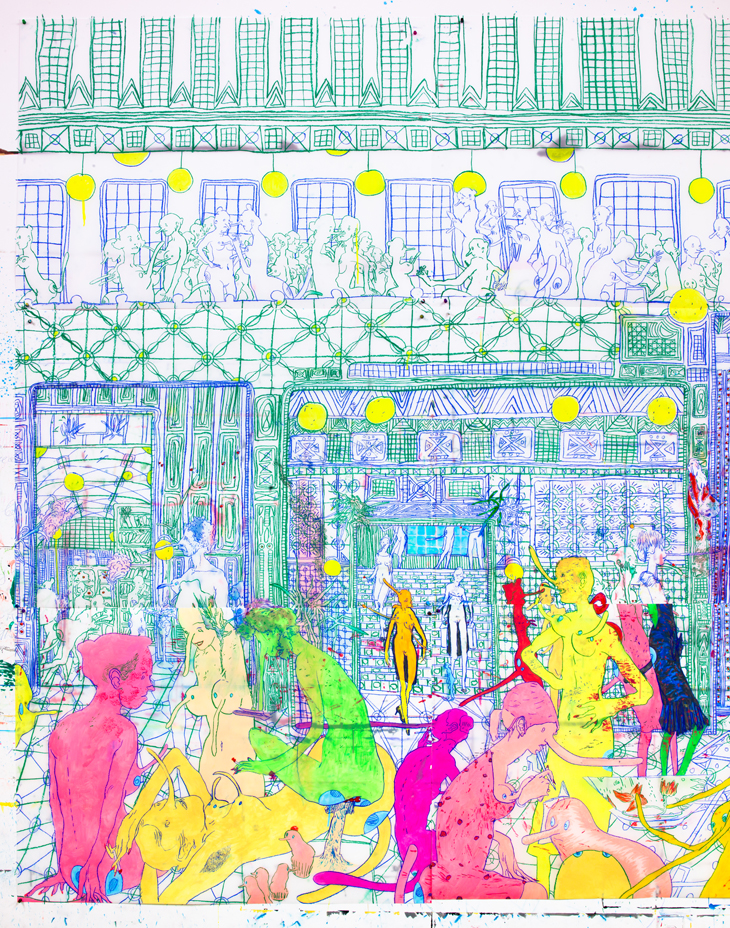
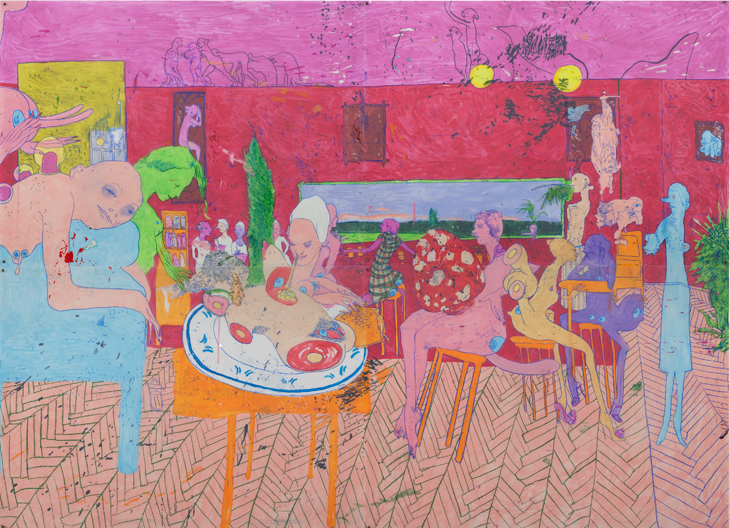
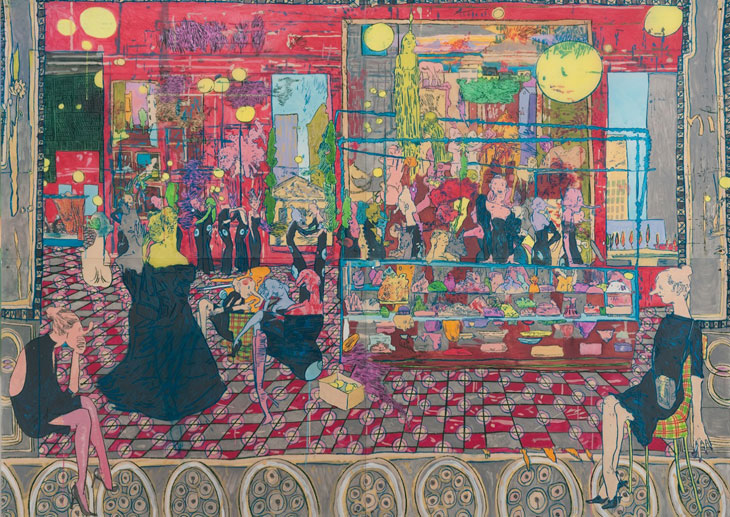
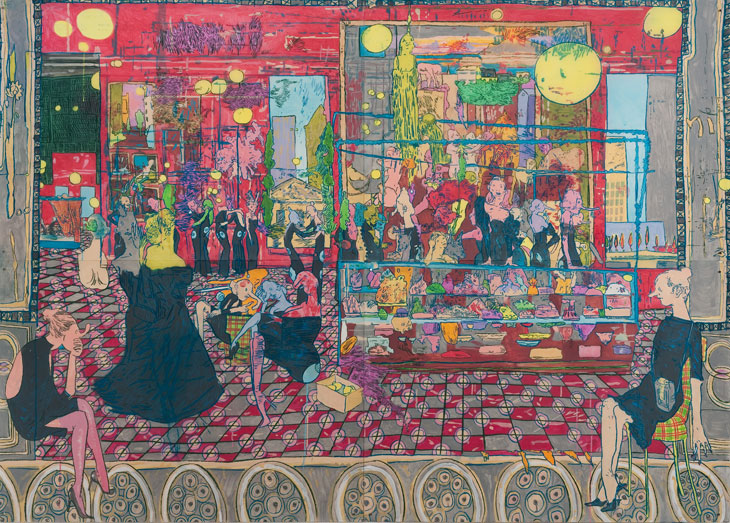
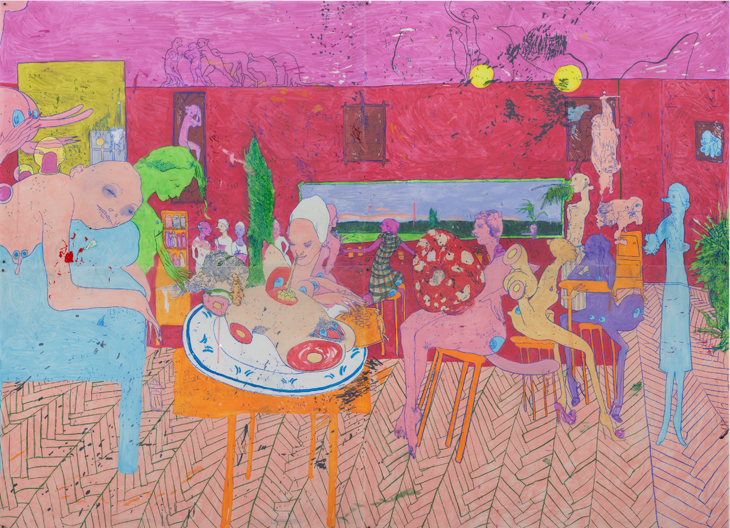
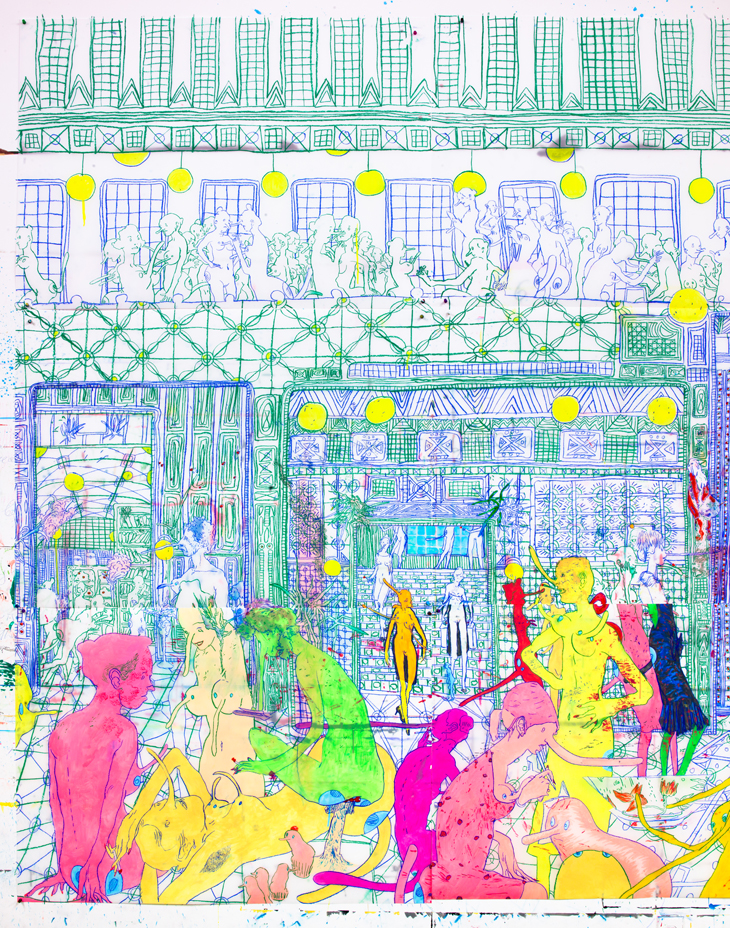
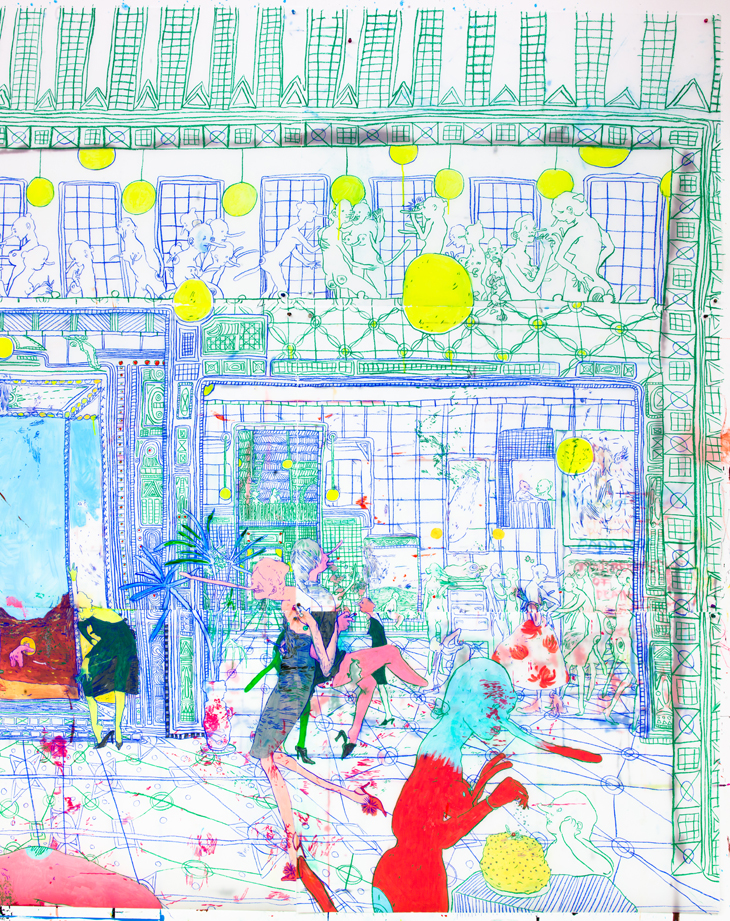
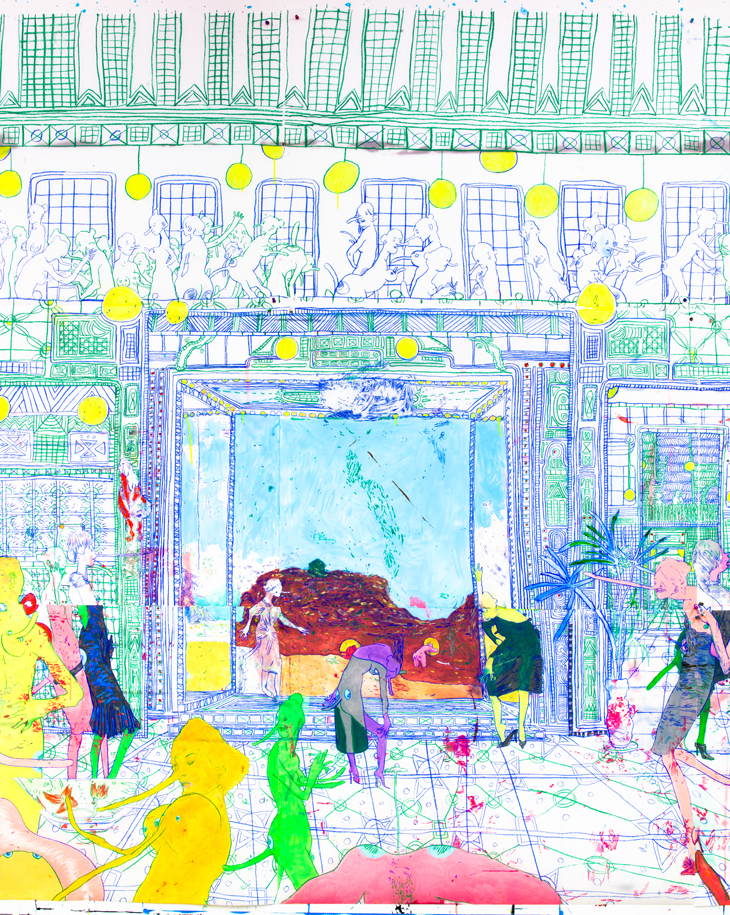
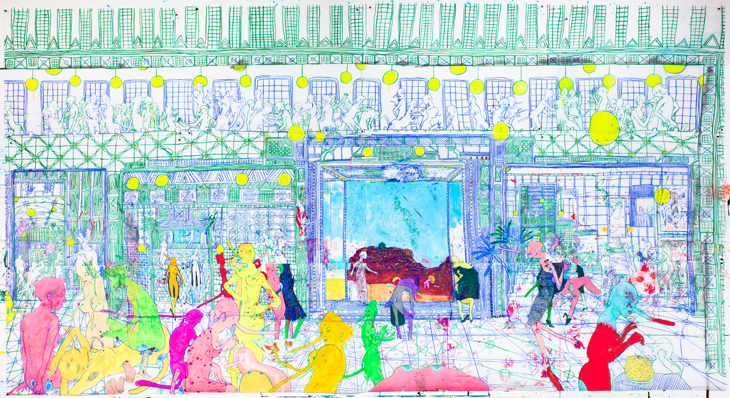


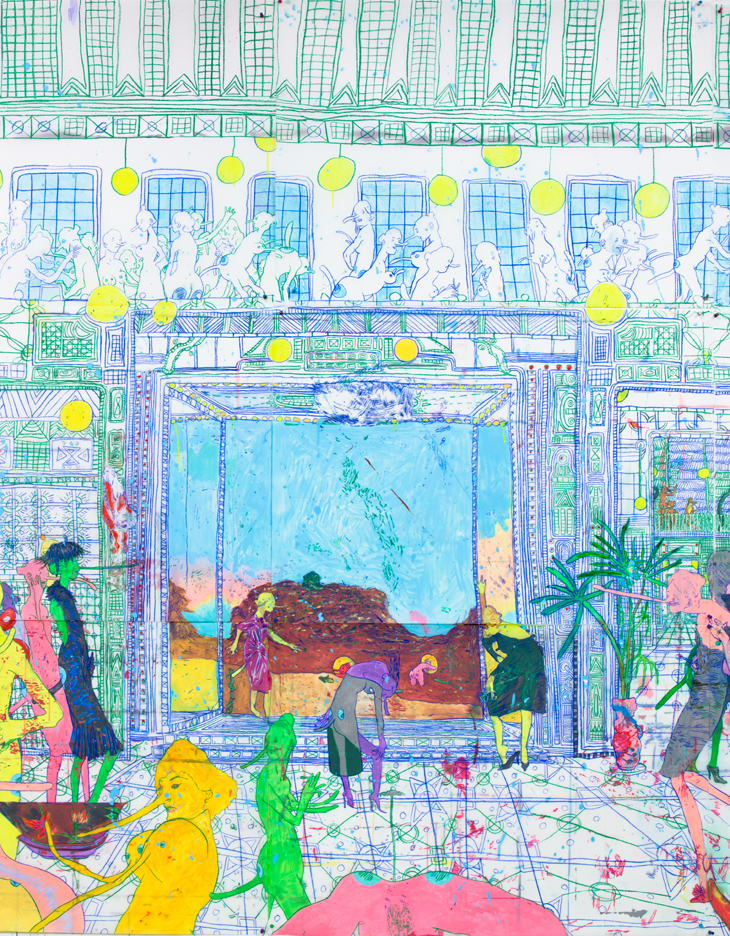
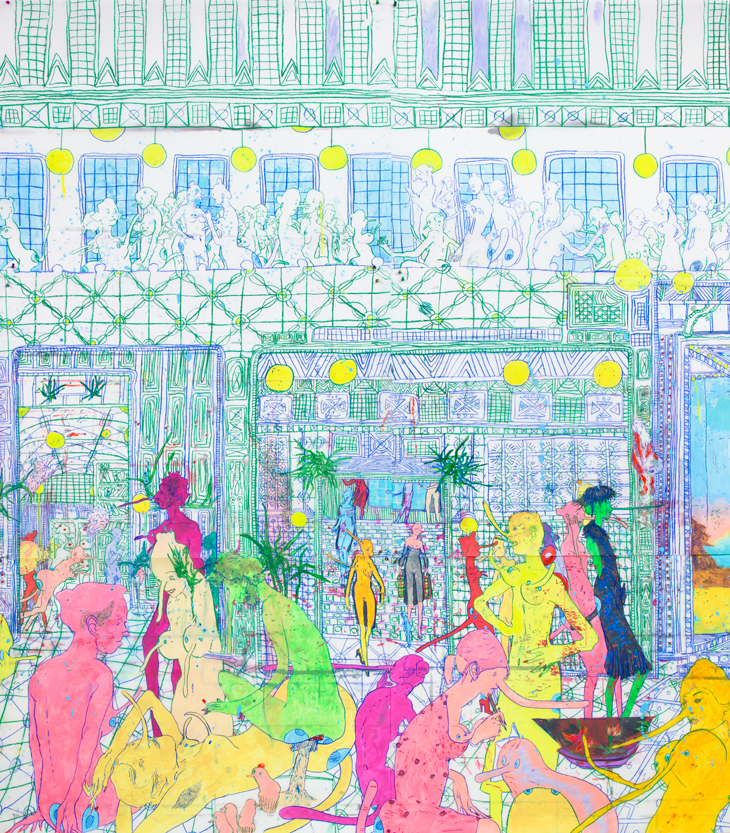
ARTIST:
Dasha Shishkin
Driven by line, Dasha Shishkin’s colourful drawings display an inventiveness and confidence not limited to fluid draughtsmanship. Her large-scale compositions on Mylar are inhabited by a psychedelic multiplicity of scenes and characters, bordering on the comical and the grotesque – a glimpse into a strange, parallel world where pre-assumed rules don’t apply.
Crowded into vertiginously patterned interiors, her blank-faced figures of elegantly clad and high-heeled women sit cross-legged, stand behind counters, talk among themselves as in a ball or ponder alone, lingering in erotically charged poses as if morphing into each other in a dream fantasy that seems to take life’s superficiality as its subject. In interviews Shishkin has explained that she doesn’t think of her works as paintings, but strictly as drawings; she considers the colour, whether it be paint or pastels or anything else, to be a kind of filling, not defining.
But colour is a crucial element shaping the form of her pictures, laying down a neon, sugary context and constant energetic distraction from the odd nonchalance of her carnival players, as seen in the large-scale What Does It Matter To Her Ever Creating Womb If Today Matter is Flesh And Tomorrow Worms. Survival Takes A Good Memory, another large-scale drawing, highlights the sinuous quality of her lines and their visceral precision truly through the bold colour blocks, like a coloured-in surrealist children’s book or Schiele on acid. Not Sad, Just Sighing depicts another oneiric performance by a familiar high society debutante cast, here even more cartoonised and claustrophobically embedded within a dizzyingly patterned gallery arcade; beyond the Dior gowns and chic pencil skirts, a desert.
Some have seen similarities between her work and the visionary, idiosyncratic action tableaux of outsider artist Henry Darger; her penchant for traditional low-brow art supplies, manneristic repetition and for phallic accessorizing (for starters, take a look at her figures’ noses and nipples) certainly reveal a similar fragility and fantastical obsessiveness.
Text by Lupe Nùñez-Fernández
Crowded into vertiginously patterned interiors, her blank-faced figures of elegantly clad and high-heeled women sit cross-legged, stand behind counters, talk among themselves as in a ball or ponder alone, lingering in erotically charged poses as if morphing into each other in a dream fantasy that seems to take life’s superficiality as its subject. In interviews Shishkin has explained that she doesn’t think of her works as paintings, but strictly as drawings; she considers the colour, whether it be paint or pastels or anything else, to be a kind of filling, not defining.
But colour is a crucial element shaping the form of her pictures, laying down a neon, sugary context and constant energetic distraction from the odd nonchalance of her carnival players, as seen in the large-scale What Does It Matter To Her Ever Creating Womb If Today Matter is Flesh And Tomorrow Worms. Survival Takes A Good Memory, another large-scale drawing, highlights the sinuous quality of her lines and their visceral precision truly through the bold colour blocks, like a coloured-in surrealist children’s book or Schiele on acid. Not Sad, Just Sighing depicts another oneiric performance by a familiar high society debutante cast, here even more cartoonised and claustrophobically embedded within a dizzyingly patterned gallery arcade; beyond the Dior gowns and chic pencil skirts, a desert.
Some have seen similarities between her work and the visionary, idiosyncratic action tableaux of outsider artist Henry Darger; her penchant for traditional low-brow art supplies, manneristic repetition and for phallic accessorizing (for starters, take a look at her figures’ noses and nipples) certainly reveal a similar fragility and fantastical obsessiveness.
Text by Lupe Nùñez-Fernández










